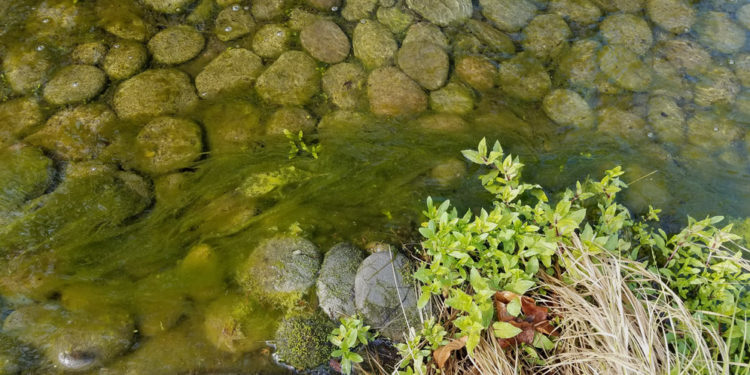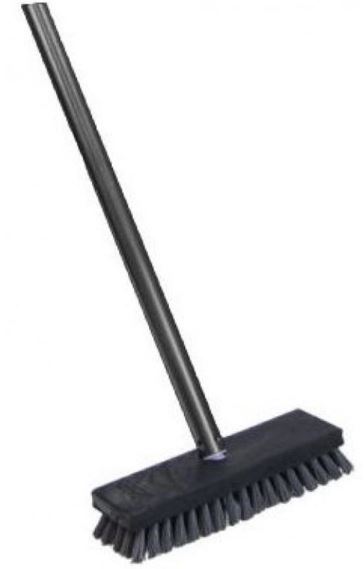
String algae is very typical in ponds during the summer months and we are getting a lot of calls about it!
You have probably heard us say “when it doubt, add more beneficial bacteria!” Why is that?
What beneficial bacteria really does
It is because beneficial bacteria consumes and converts the excess nutrients in the water that the algae is using for fuel. Specifically, beneficial bacteria converts ammonia in the pond to nitrites. Different strains of bacteria convert those nitrites into nitrates. It essentially is the by-product of conversion. The nitrates are absorbed by plants growing in the pond. We call this the Nitrogen Cycle. The variety of color and texture in leaves and flowers that aquatic plants offer are fed by these Nitrates! It is the nutrients that are leftover that are available to all sorts of ALGAE! When the beneficial bacteria and plants use all the available nutrients, then it is not available to the algae.

Aquascape dry beneficial bacteria has 8 different strains of bacteria in it to cover all these bases. However, if you have a different brand bacteria on hand, use it!
Algae is a part of a natural pond
Algae is a natural part of a pond and having less of it is just a matter of getting the pond in balance by using beneficial bacteria and growing plants. People sometimes report that they didn’t have the problem the year before but they do now and they want to know why.
Certainly we don’t want the algae to get the upper hand, but if it pops up, it is normal. Why it came up this year versus last year is basic: there were excess nutrients in the pond.
But bacteria didn’t help my pond.
I have heard some people say that they have tried that but it didn’t work so they stopped putting it in.
That would be like saying I put water on my dry lawn but it still looks dry. The water didn’t work so I stopped watering it. Bacteria needs to be added weekly and more when it rains or is very hot, and when algae is finding lots of extra nutrients available.
Solutions
1. Find ways to lower the nutrients in the pond. How often are you feeding the fish? You may be able to cut that in half. They munch on algae too. We all like to feed our fish and the more we feed them, the more nutrients are in the pond. If you want to talk about how often you are feeding them, give me a call.
2. Find a way to use up more of the nutrients in the pond. Add plants! Remember that putting a new small plant in will not fix the problem. Planning ahead and allowing a variety of plants with multiple colors and textures will help use up more nutrients and they will grow to mature plants in a couple of seasons. Make sure you get Zone 5 plants so they will overwinter here in Colorado.
3. Provide more shade for your pond. More plants add more shade. Lilies are great for shade! However, if your pond is too deep or too shallow for lilies, floating plants are a great option. There are floating islands, hyacinth and water lettuce that readily propagate on their own. They do not overwinter but provide great shade in the meantime. If they tend to go into the skimmer, tie them to a rock with some fishing line – you will hardly be able to see it. They use up excess nutrients too!
Another way to provide shade is simply to put up shade. We have a patio umbrella that we move in place to give the pond more shade.
4. Use an Iongen. An Iongen releases copper ions into the water and they adhere to the string algae. This kills off the string algae. Caution must be taken as the Iongen will hurt floating plants and potentially fish. Make sure that if you have fish you follow the directions exactly and keep it set at a low level.
5. Follow the above advice and also remove the algae using a long-handled flat brush.  A little every day can help as you get the pond in balance.
A little every day can help as you get the pond in balance.
Remember that there is no magic wand when it comes to nature. Help get your pond in balance by following the advice above. Once the pond is in balance, algae won’t be so much of an issue.
